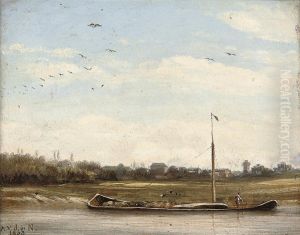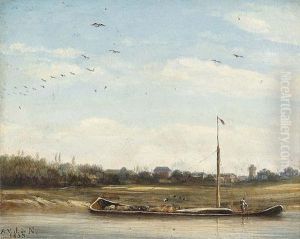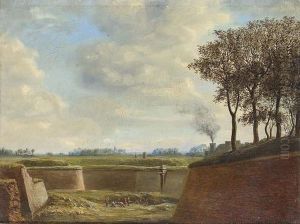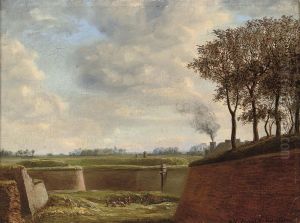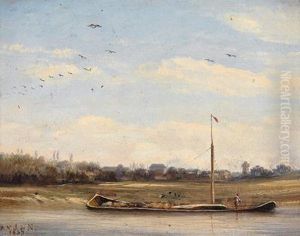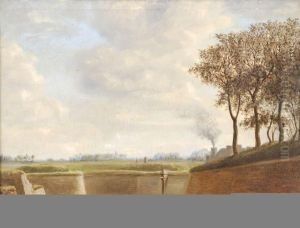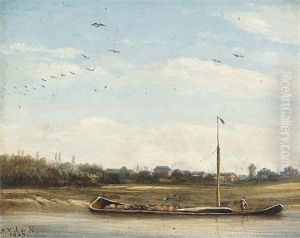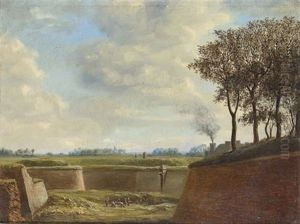Antoine Valentin Jumel De Noireterre Paintings
Antoine Valentin Jumel De Noireterre, born in 1749 and deceased in 1823, was a figure shrouded in the complex fabric of French historical and artistic development, particularly within the tumultuous periods surrounding the French Revolution and the Napoleonic era. Despite the scarcity of detailed records about his personal life, Jumel De Noireterre's contributions and his involvement in the artistic and cultural milieu of his time provide a fascinating lens through which to view the era's artistic endeavors and societal shifts.
Jumel De Noireterre's life spanned a period of profound political, social, and cultural upheaval in France. Born into the ancien régime, his early years were spent under the shadow of the Enlightenment, a period that championed reason, individualism, and a challenge to traditional structures of power and authority. This intellectual climate, coupled with the subsequent outbreak of the French Revolution in 1789, would have provided a vibrant, albeit chaotic, backdrop to his formative and adult years. Jumel De Noireterre's activities during these years, though not thoroughly documented, suggest an engagement with the revolutionary ideals and the transformative potential of art in society.
As an artist, Jumel De Noireterre's work is less documented than that of his contemporaries, leaving art historians to piece together his contributions from the fragments that remain. What is clear, however, is that his artistic endeavors were inevitably influenced by the dramatic shifts in French society. The Revolution and the rise of Napoleon Bonaparte brought about a new aesthetic that emphasized heroism, nationalism, and the glorification of French achievements. Artists of the time, including Jumel De Noireterre, navigated these themes, contributing to the rich tapestry of French art that sought to reflect and shape the nation's identity.
After the fall of Napoleon and the restoration of the Bourbon monarchy, France entered a period of reevaluation and adjustment, both politically and culturally. Jumel De Noireterre's later years would have been marked by this transition, as the artistic community sought to find its place within the restored monarchy and the evolving landscape of French society. His death in 1823 came at a time when France was still grappling with its identity, making his life a reflection of the tumultuous journey of the French nation through revolution, empire, and restoration.
Jumel De Noireterre's legacy, while not as prominently recognized as that of his peers, offers a unique perspective on the role of artists during a period of extreme societal change. His life and work embody the challenges and opportunities that came with the upheaval of traditional norms and the search for new expressions of identity and nationhood through art. Though much about him remains to be discovered, Antoine Valentin Jumel De Noireterre remains a figure of intrigue in the study of French art history, representing the lesser-known artists who navigated the complexities of their times through their creative endeavors.
